- DevOps and SDLC
- What is DevOps? Waterfall vs. Agile Software Development Scrum, Kanban, and Lean: Process Cheat Sheet What is Github? A Git Tutorial Git Commands Cheat Sheet Code Review Best Practices for Teams Introduction to CI/CD and Pipelines Deployment Strategies: Blue-Green, Canary, and Rolling Releases Configuration as Code: Why and How? Understanding Jenkins and Its Pipelines What is a Container? A Docker Tutorial Building and Using Docker Containers and Images Docker Interview Questions Debugging and Profiling 101 Linux Interview Questions Linux Bash Commands Cheat Sheet Introduction to Security in Software Development Web Application Security Principles Introduction to Network Topologies Introduction to Kubernetes Introduction to Data Cleaning and Wrangling Hands-On With Terraform Tutorial What is DNS and How Does It Work? Observability 101: Metrics, Logs, and Traces Logging with the ELK Stack What Is Serverless Computing? Monorepo vs Polyrepo: A Comparison Azure Interview Questions


DevOps and SDLC
Software engineering is the use of engineering fundamentals within the field of software development. The primary goal is the creation, improvement, and maintenance of software. Software engineering takes into account engineering concepts, such as rigorous testing, the hardware and software environment, and systematic discovery.

Section Menu
How do I use this section?
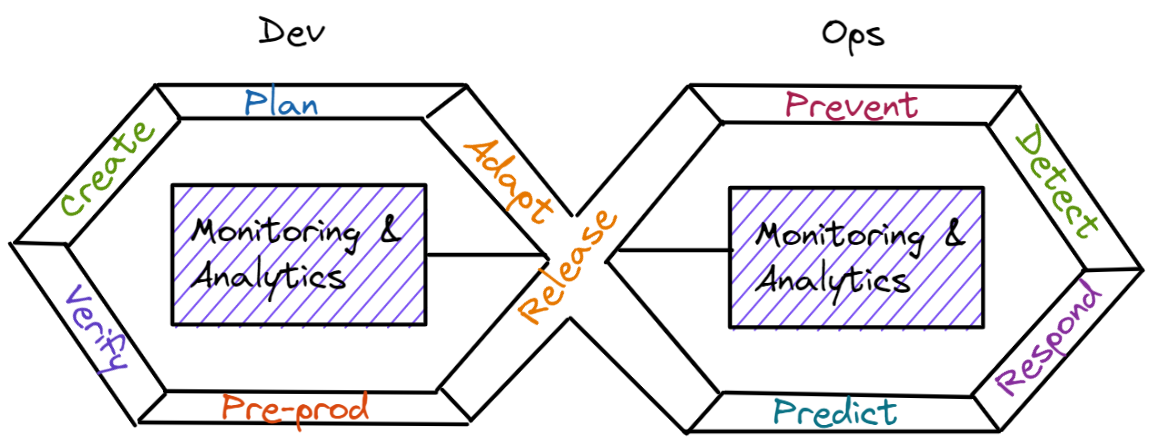

What is DevOps?
Back in the day, to craft a robust software application, developers dove deep into the heart of the problem the software aimed to solve. They would often start with something like a pseudo-code or flowchart: START INPUT: User requirements PROCESS: Analyze and design solution OUTPUT: Software application END This demanded an in...
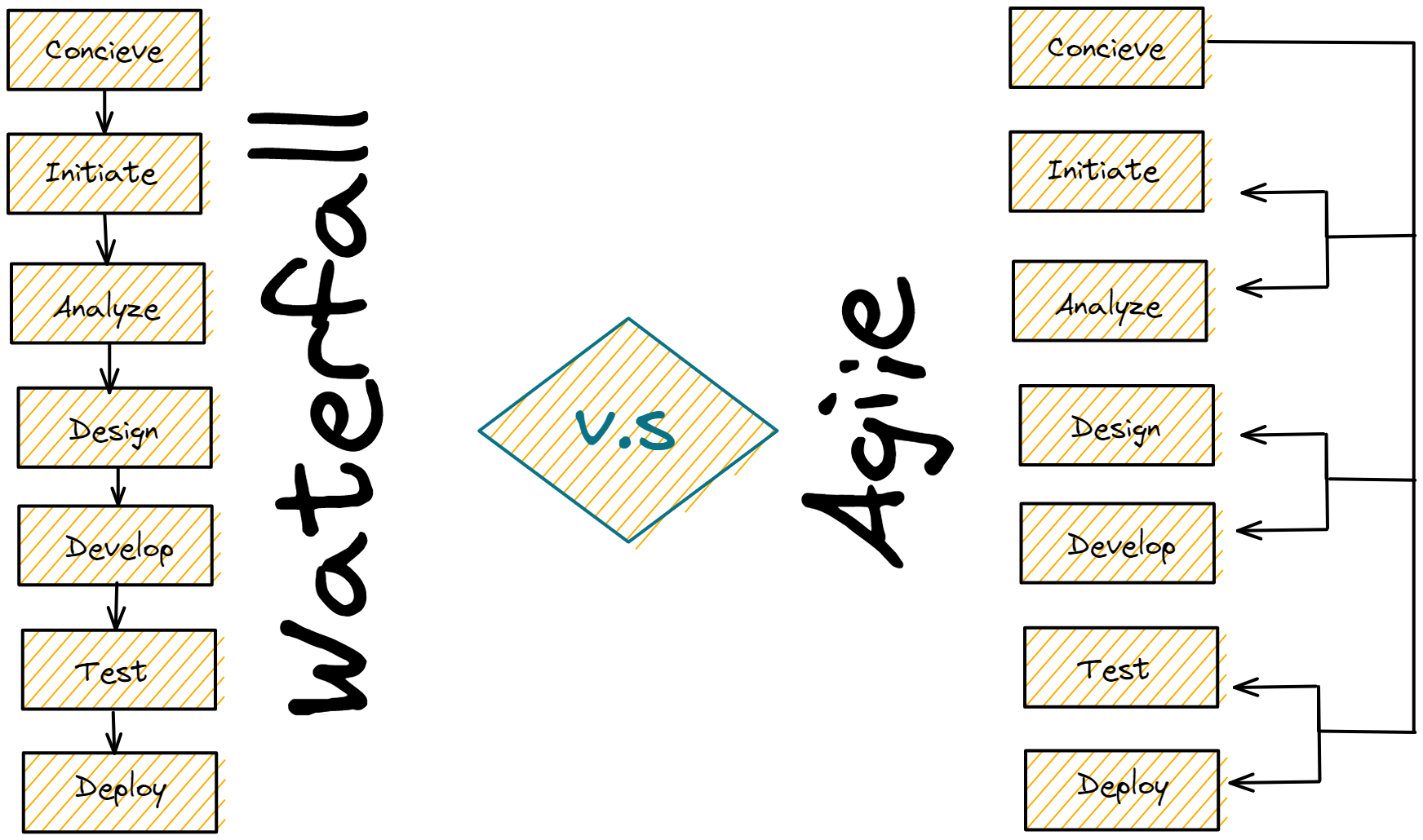

Waterfall vs. Agile Software Development
When it comes to software development, there are always crucial decisions the development team has to make in the beginning of the development process, regarding the principles and technologies that they will use. Everyone has different opinions, and often come to disagreements, especially when having to choose a project management methodology. T...
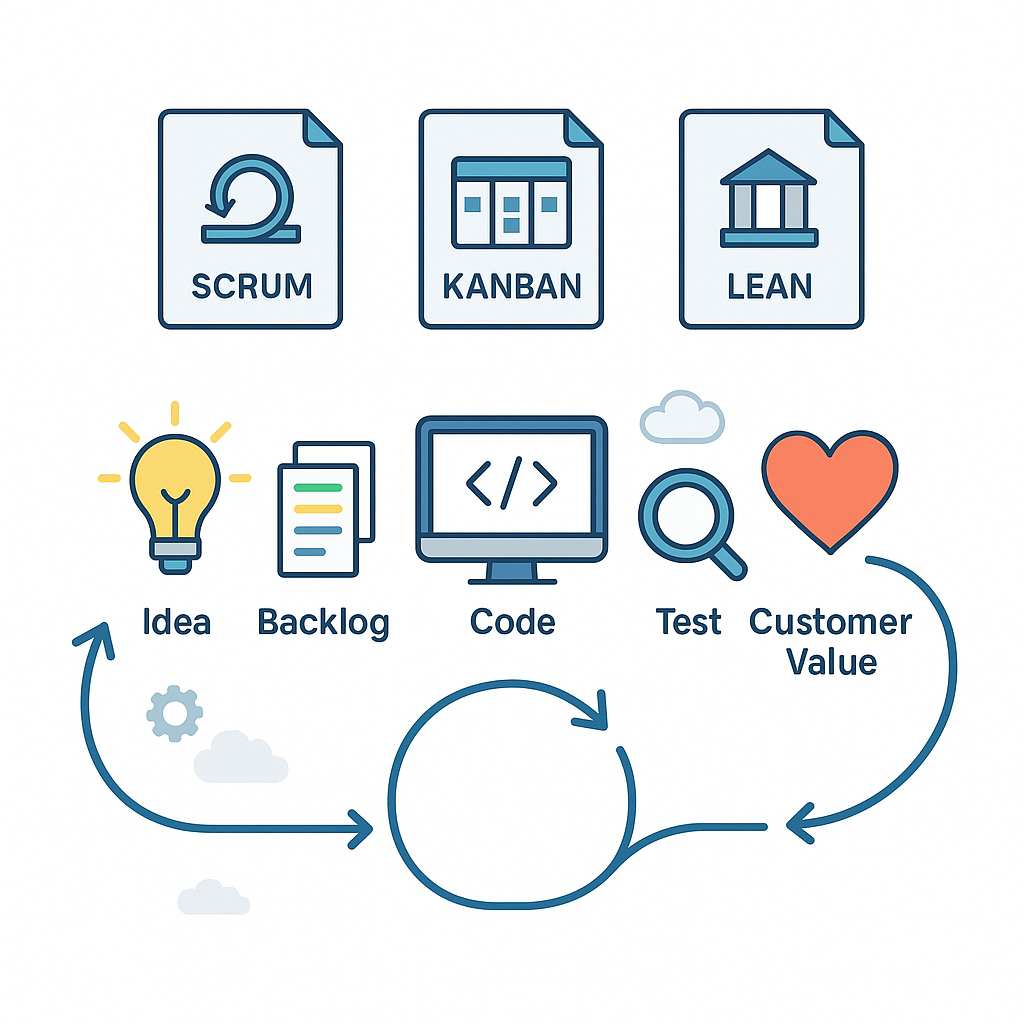

Scrum, Kanban, and Lean: Process Cheat Sheet
Why Process Matters Software is a team sport. Without a playbook, even great players trip over each other. Scrum, Kanban, and Lean are three popular playbooks for coordinating how work flows from idea to production—faster, safer, and with less drama. In DevOps, the goal is speed with stability. These methods help you reduce chaos, expos...


What is Github? A Git Tutorial
In this lesson, we will learn about managing source code, with a focus on following key points: What are version control systems? Understanding git workflow using examples. Understanding remote code hosting provided by GitHub. Often while working with code, you encounter a situation when you wa...


Git Commands Cheat Sheet
What is Git? In the past decades, software engineering started to become more complex than ever, requiring larger project structures, and more collaborators on the same project. These advancements in technology and software development showed an increased need of a version control system. This type of system is responsible for changes track...
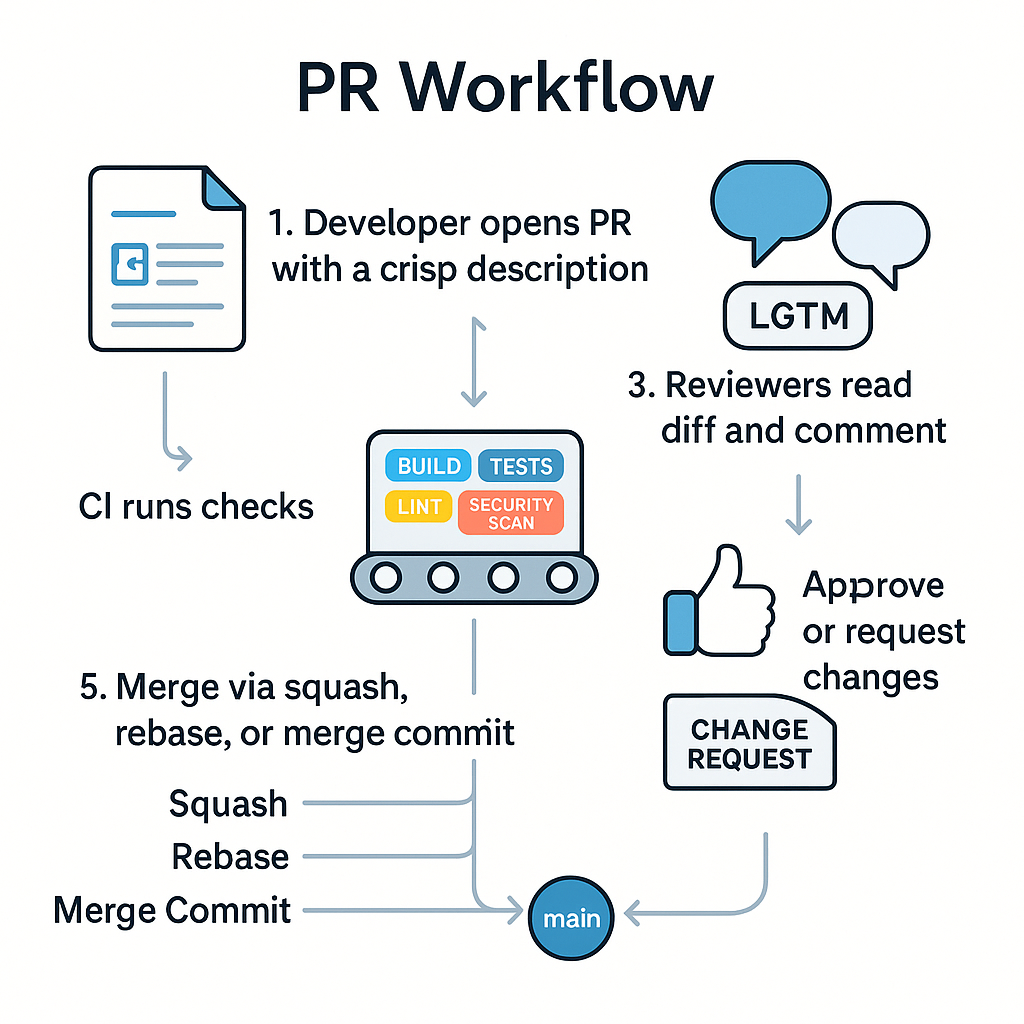

Code Review Best Practices for Teams
Why Reviews Software is a team sport. code review is where we pass the ball without dropping it. Reviews catch bugs, spread knowledge, enforce standards, and—crucially—help us ship faster with confidence. Faster? Yes. Fixing bugs in main is slow and embarrassing. Fixing them in a pull request is fast and fun (well, faster and fun-ish)....


Introduction to CI/CD and Pipelines
CI/CD pipelines-- where CI stands for Continuous Integration and CD stands Continuous Delivery-- is a software development practice through which all developers make code changes to a central depository multiple times a day. It automates the entire software release process. The pipeline builds code, runs test cases (continuous **inte...
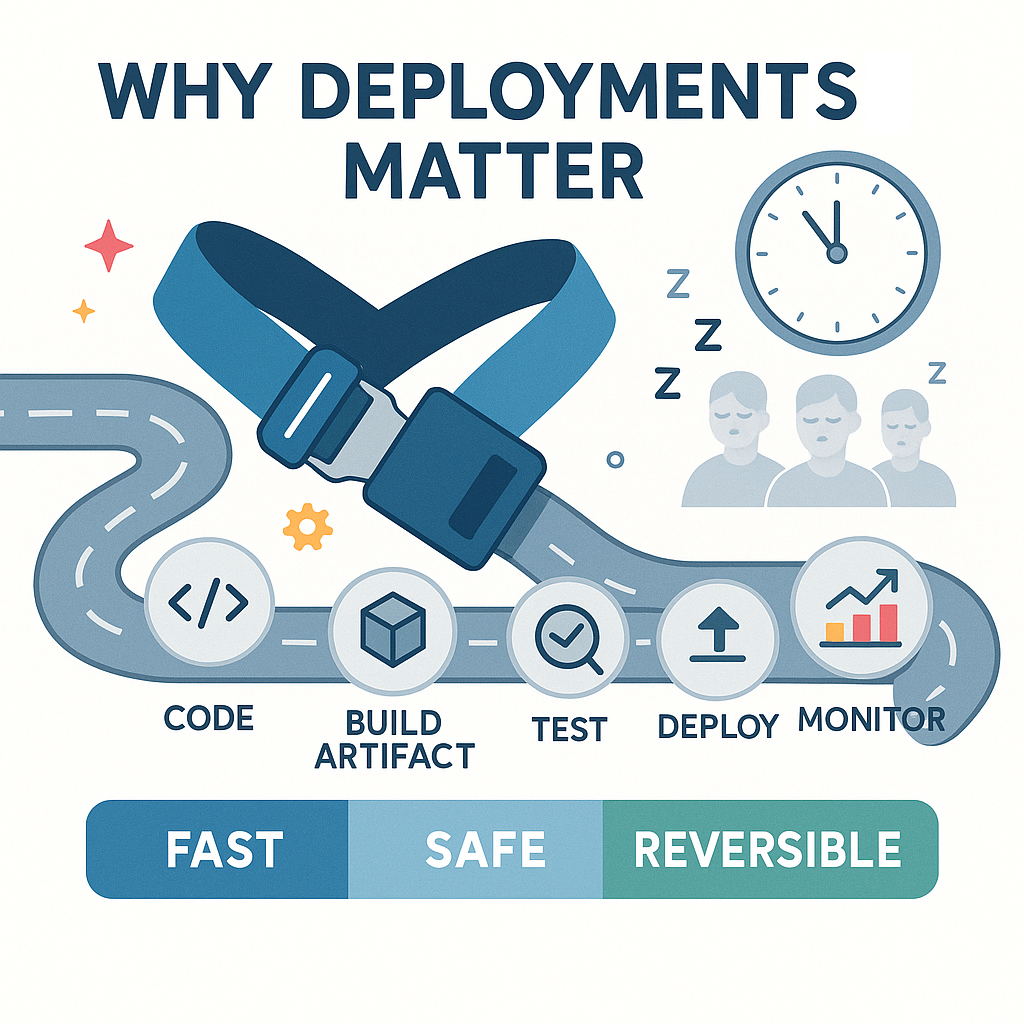

Deployment Strategies: Blue-Green, Canary, and Rolling Releases
Why Deployments Matter Shipping code is easy. Shipping code without waking up your whole team at 2:13 a.m. is the sport. Modern teams push often, in small pieces, and need releases that are fast, safe, and reversible. Think of deployment strategies as seatbelts for your SDLC: you hope you won’t need them, but you really want them when somethi...
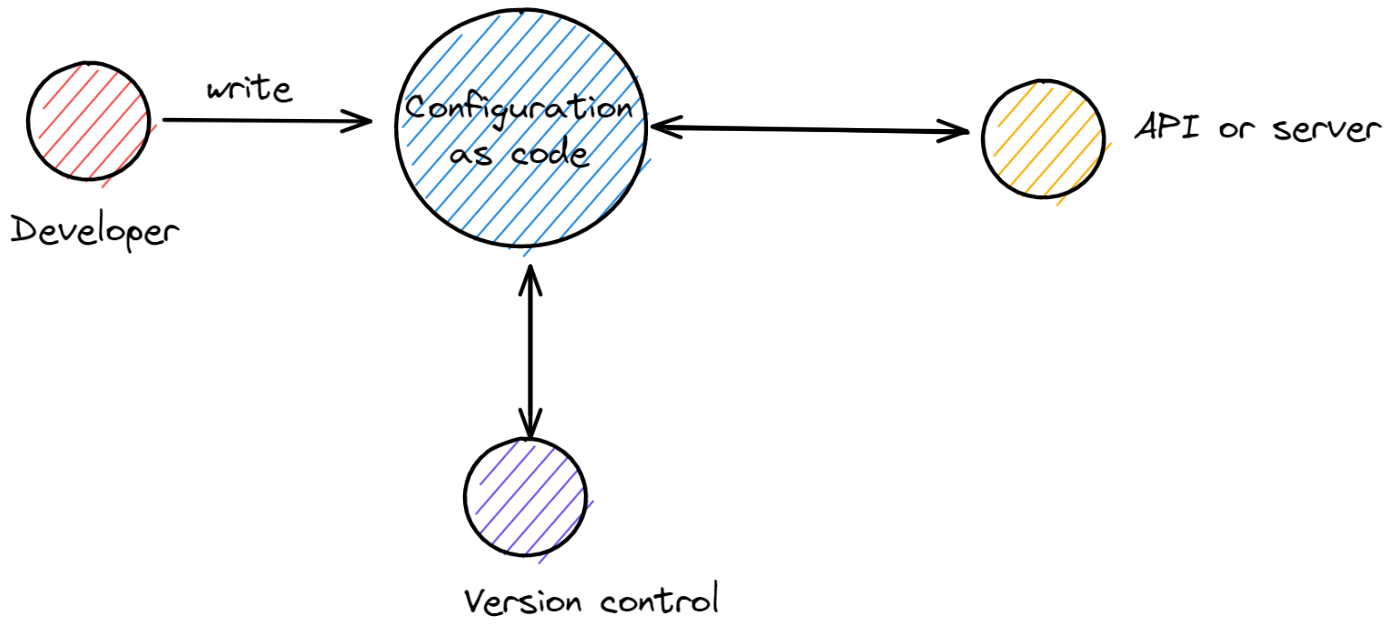

Configuration as Code: Why and How?
Managing the configuration settings of an application is an increasingly important aspect of modern software development. These configurations used to be stored with their associated application code repositories and any changes required a new version of the code to be deployed, even if a single configuration needed to be changed. As teams nowada...
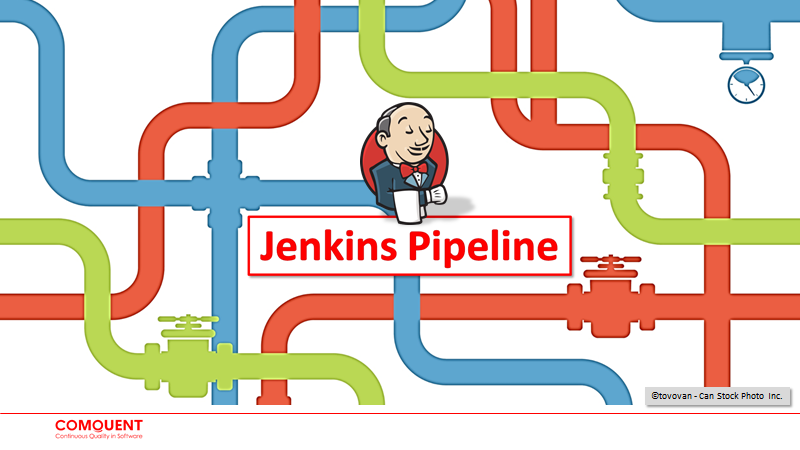

Understanding Jenkins and Its Pipelines
Unveiling the Magic of Jenkins: Mastering CI/CD Pipelines The world of Continuous Integration and Continuous Deployment (CI/CD) is a realm where code changes transform into features, almost like spells turning frogs into princes. But, how does one master this arcane art? Enter Jenkins, your wand for automating, building, testing, and deploying...


What is a Container? A Docker Tutorial
Getting Started with Docker First: why use Docker at all? Before touching commands, it helps to know the problem Docker solves. Apps rarely run the same way on every machine—different OS versions, missing libraries, conflicting dependencies. Docker smooths that out. 

Building and Using Docker Containers and Images
Setting the Stage: A Quick, Friendly Refresher on Docker Docker, Unpacked (in plain English) Before we start building images and spinning up containers, let’s remind ourselves what Docker is—and why developers won’t stop talking about it. Docker is an open-source toolkit that helps you build, ship, and run applications in neat little...


Docker Interview Questions
Introduction As Docker continues to gain popularity as a containerization tool for developing, deploying, and managing applications, it's no surprise that it has become a hot topic in the tech...
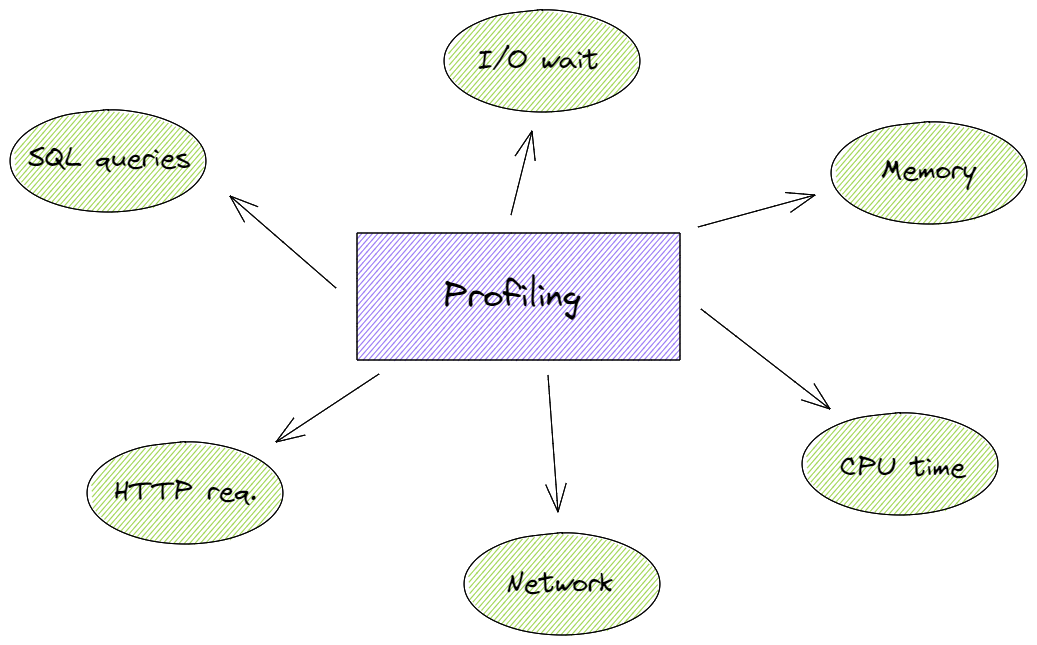

Debugging and Profiling 101
One of the most important steps in the software development process is to detect and identify the origin of errors, so that they can be eliminated. These errors can include memory leaks, different kinds of exceptions, or even just business logic mistakes, and can be identified during the debugging process, using the proper debugging tools - de...


Linux Interview Questions
Introduction Linux is an open-source, Unix-like, freely-distributable computer operating system (OS) built around the Linux Kernel. This operating system is responsible for managing the system’s hardware and resources, such as its CPU, memory, and storage, _as well as managing the communication betwe...


Linux Bash Commands Cheat Sheet
In this lesson, we will learn about bash and its basic commands, with a focus on the following key points: Getting an introduction to bash and its commands. Understanding how to perform operations using the command line. Computers provide two kinds of interfaces to the user: Graphical User Inter...
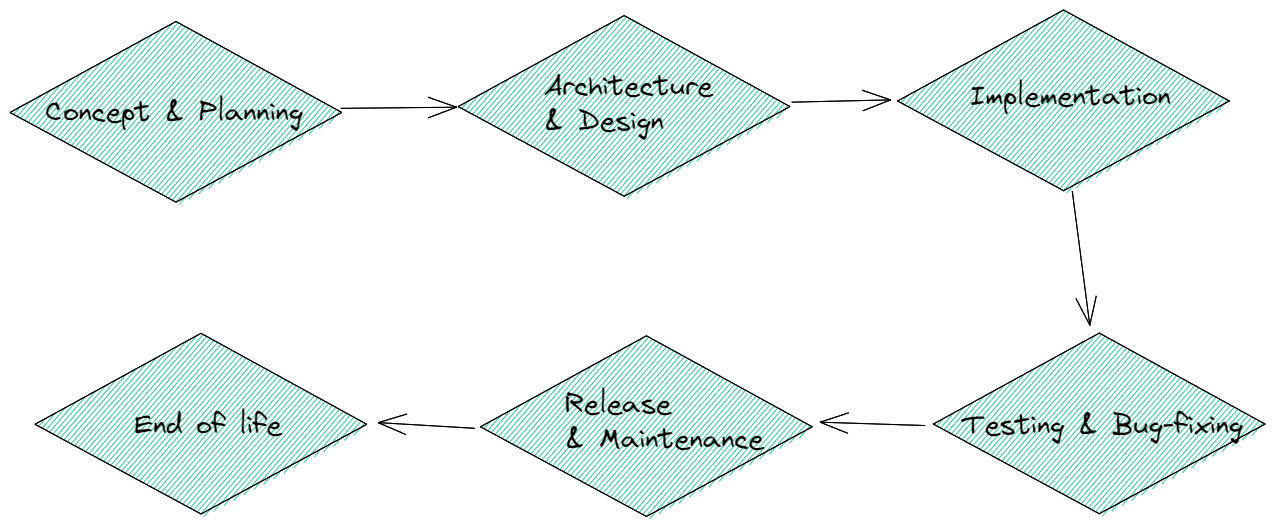

Introduction to Security in Software Development
Security risks in software applications are all around. Especially in these times of constant cyberattacks happening every minute, they can affect everyone — including individuals, businesses, and governments. For that reason, ensuring security in software development is essential. Cybercriminals are constantly looking for ways to use the vulnera...
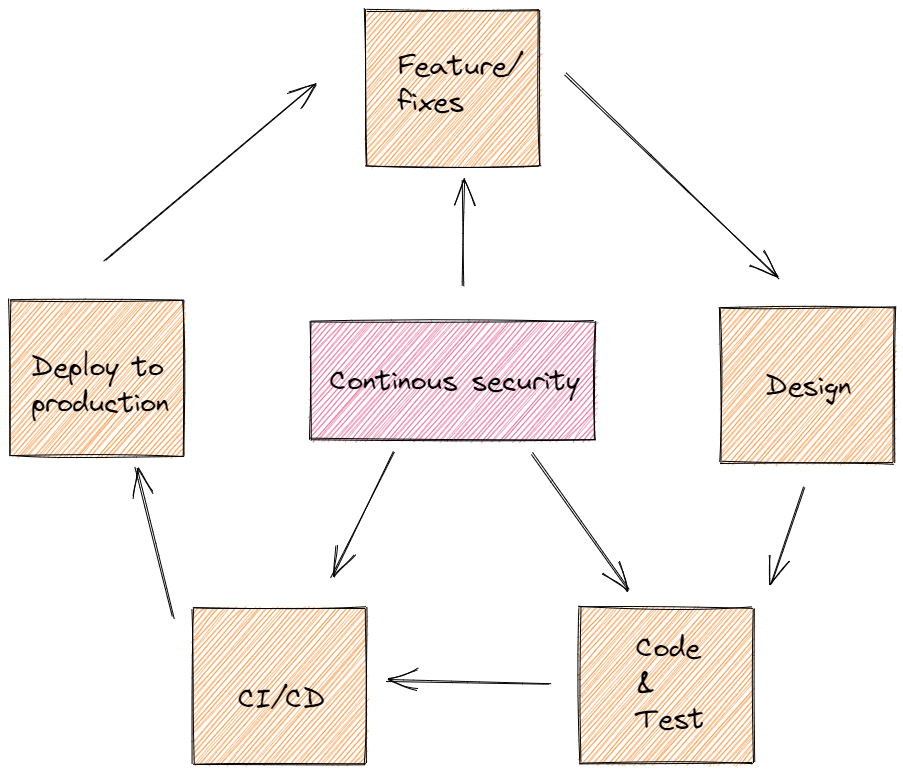

Web Application Security Principles
We use web applications for so many things in everyday life. Thus, several times a day, we find ourselves inputting sensitive information into many different types of online channels. As developers, we face a lot of challenges, of which security is both important and often underrated. Because of that, we should be dedicated to making more of an e...
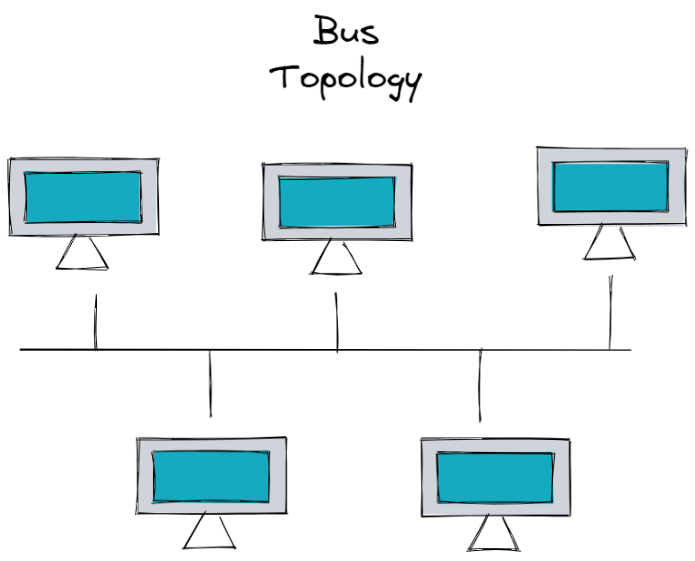

Introduction to Network Topologies
Network topology is the way a network is arranged, including the > physical or logical description of how links and nodes are set up to > relate to each other. The configuration or topology of a network plays an important role in its performance. There are many possible ways for arranging a network, and all come with different advantages and di...
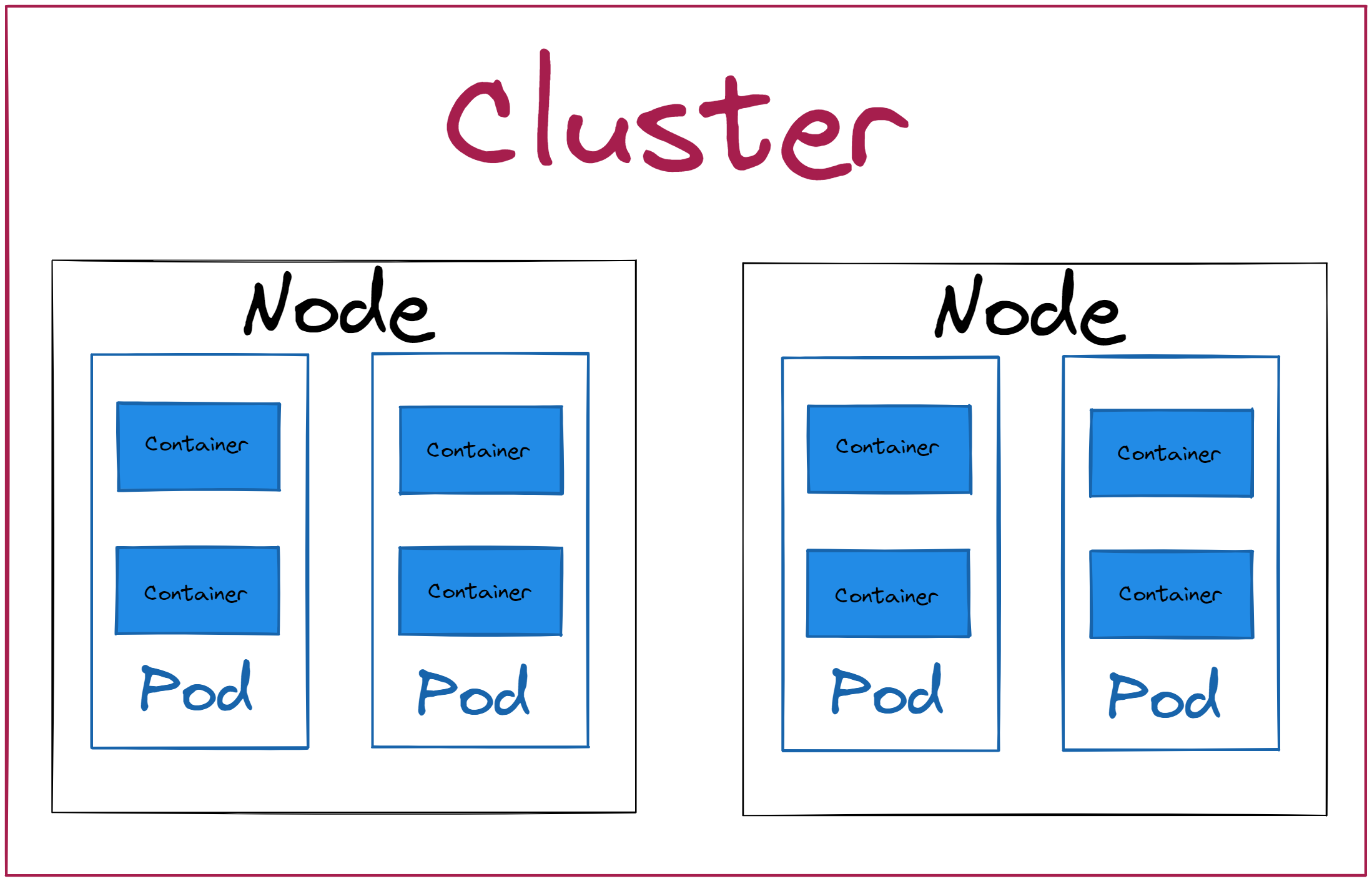

Introduction to Kubernetes
What is an orchestration system? Kubernetes, in its most common usage, is a container orchestration system. Of course, we need to define what that means! Look no further: > An orchestration system provides automated configuration, > coordination and management of complex computing networks, systems and > services. So these systems a...
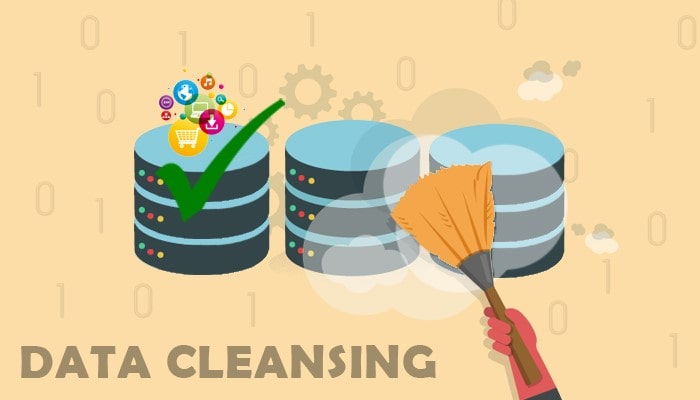

Introduction to Data Cleaning and Wrangling
The Importance of High-Quality Data In the modern business landscape, data is often considered the lifeblood of an organization. Industries like banking, insurance, retail, and telecommunications heavily rely on data to drive performance and gain a competitive edge. The Cost of Poor Data Imagine you're an archer, and your data is the bo...


Hands-On With Terraform Tutorial
Introduction to Terraform What is Terraform? Terraform is an open-source infrastructure as code (IaC) tool that automates the provisioning, management, and destruction of infrastructure across a variety of cloud providers and on-premises environments. Terraform uses a declarative language to define the desired state of your infrastructure...
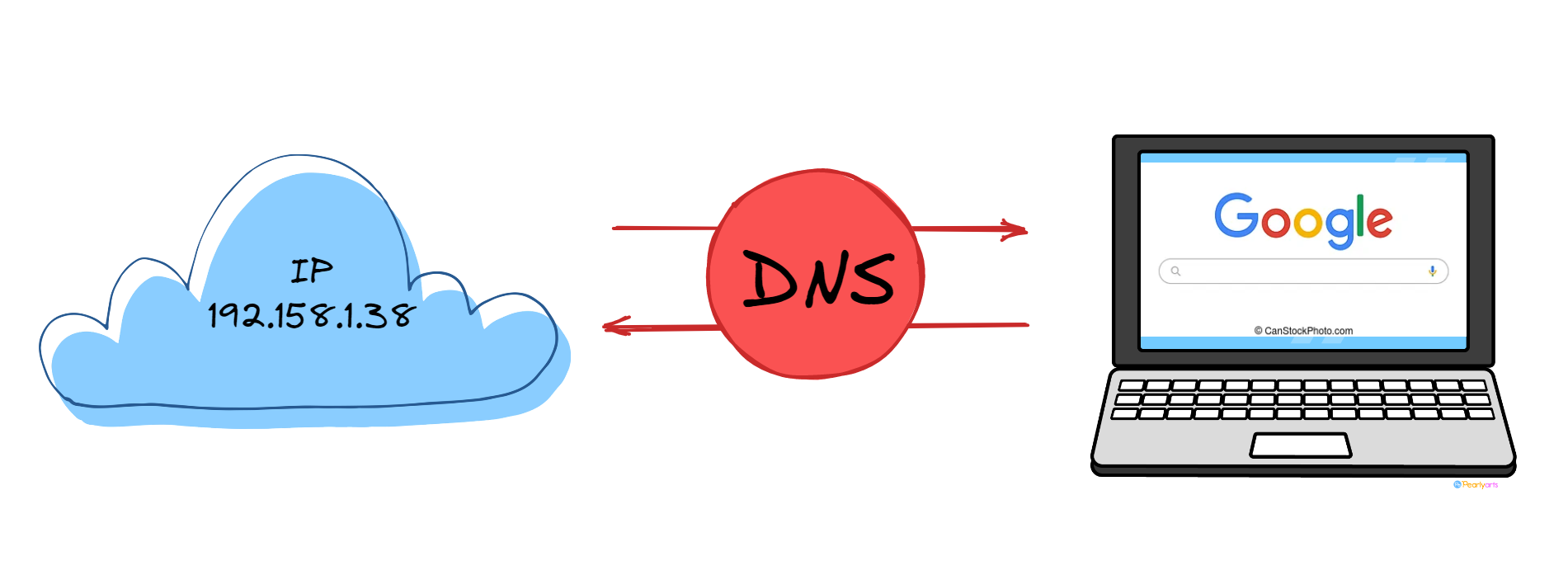

What is DNS and How Does It Work?
The Domain Name System (DNS) is a critical component of the internet, allowing users to access websites and other online resources by using simple names rather than long strings of numbers. Let's go deeper and learn more about DNS. What is DNS? The Domain Name System (DNS) is a server-based network that converts human-readable domain names...
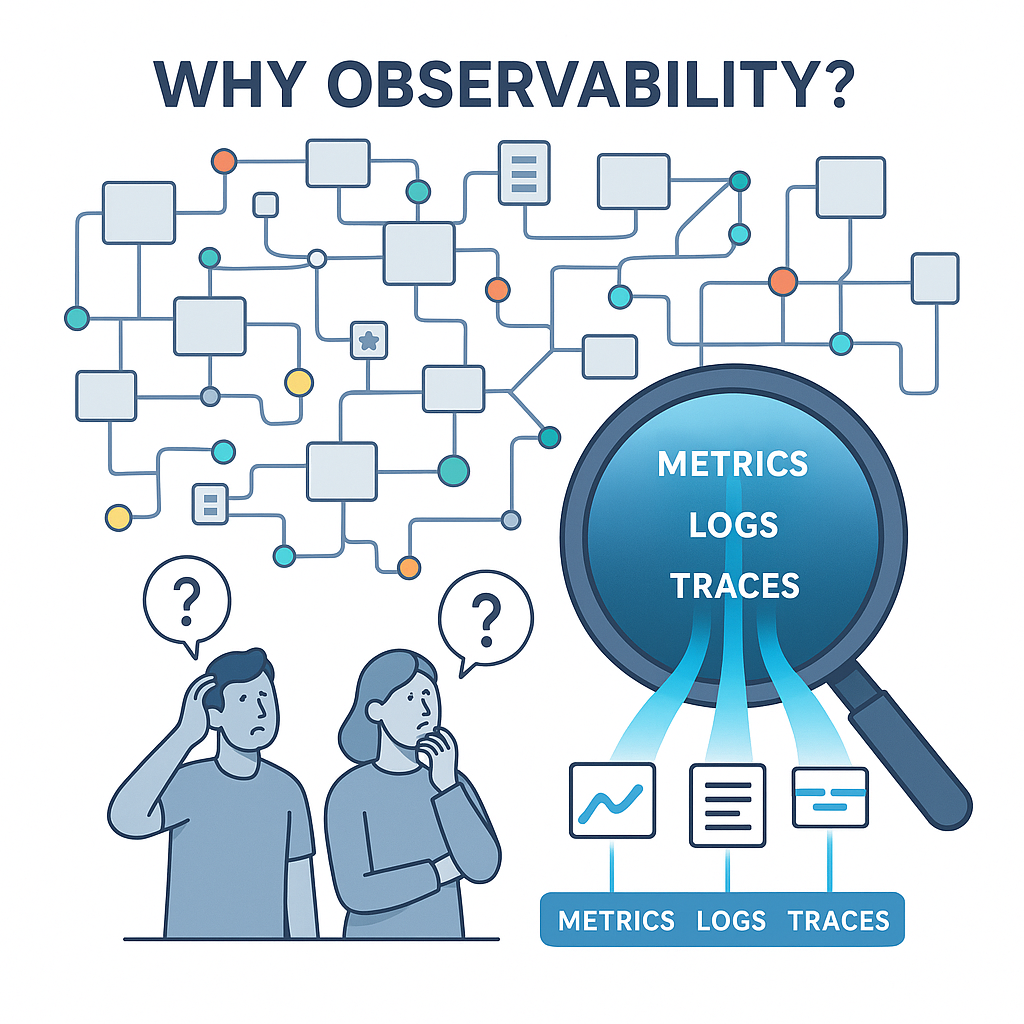

Observability 101: Metrics, Logs, and Traces
Why Observability Software is a team sport. The bigger the team (and the more services), the more “wait, what just happened?” moments you get in production. Observability is how you answer those questions fast, without guesswork. Short version: observability helps you see what your system is doing right now so you can ship faster, sleep bette...
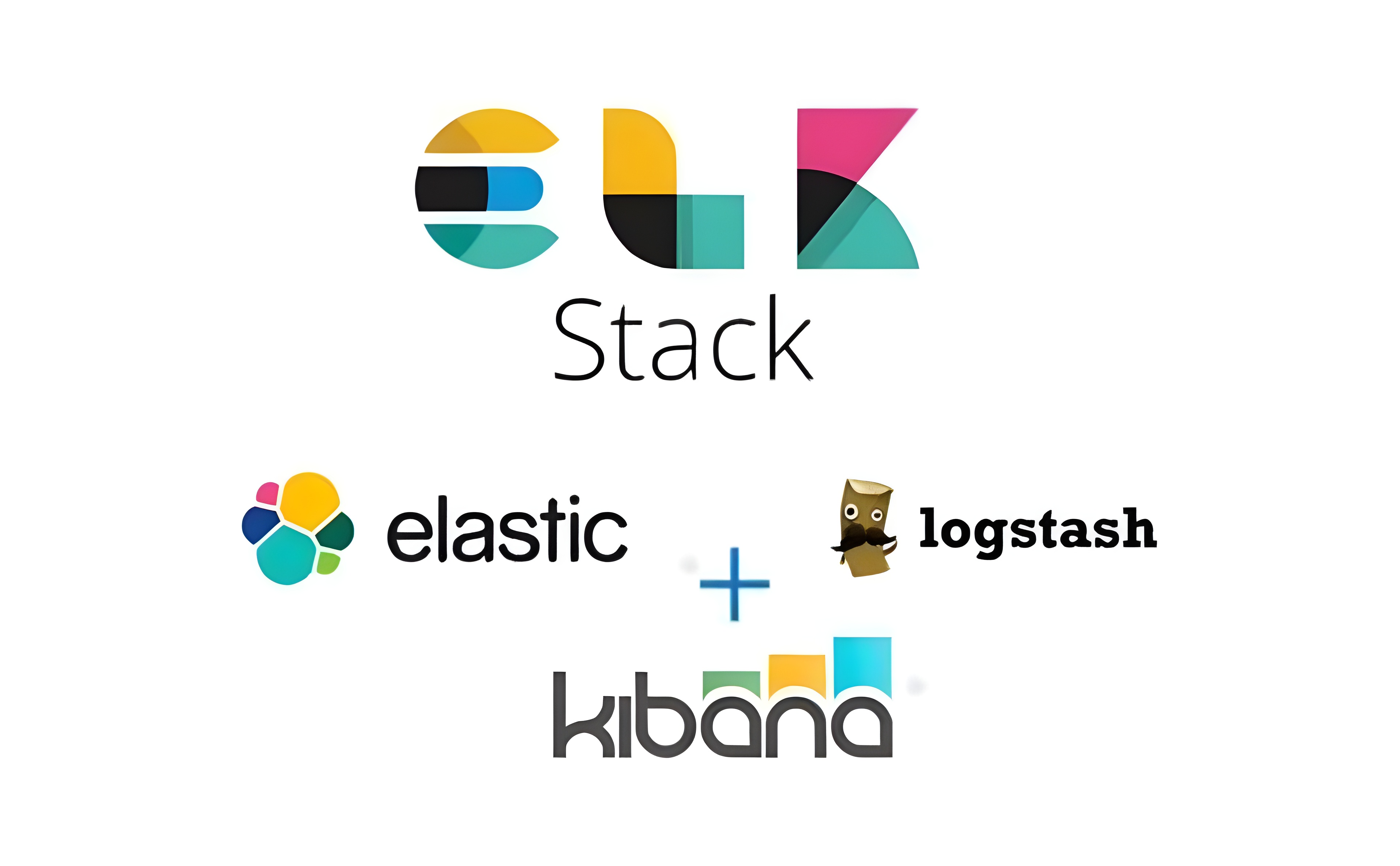

Logging with the ELK Stack
A Comprehensive Guide to Centralized Logging with the ELK Stack Why Logging Matters The Vital Role of Logging Logging serves as the central nervous system of modern software applications. Think of it as th...


What Is Serverless Computing?
The One-Sentence Idea Serverless computing is a cloud execution model where you deploy functions or small services without managing servers or capacity. The platform handles provisioning, scaling, and patching, and you pay per execution time and resources used instead of for idle servers. <img src="https://storage.googleapis.com...


Monorepo vs Polyrepo: A Comparison
Introduction: Navigating the Monorepo vs. Polyrepo Maze Welcome to the world of code repositories! Imagine your codebase as a library: would you prefer one massive room containing all books and resources or multiple specialized rooms? This question brings us to the crossroads between Monorepo and Polyrepo architectures. What is a...
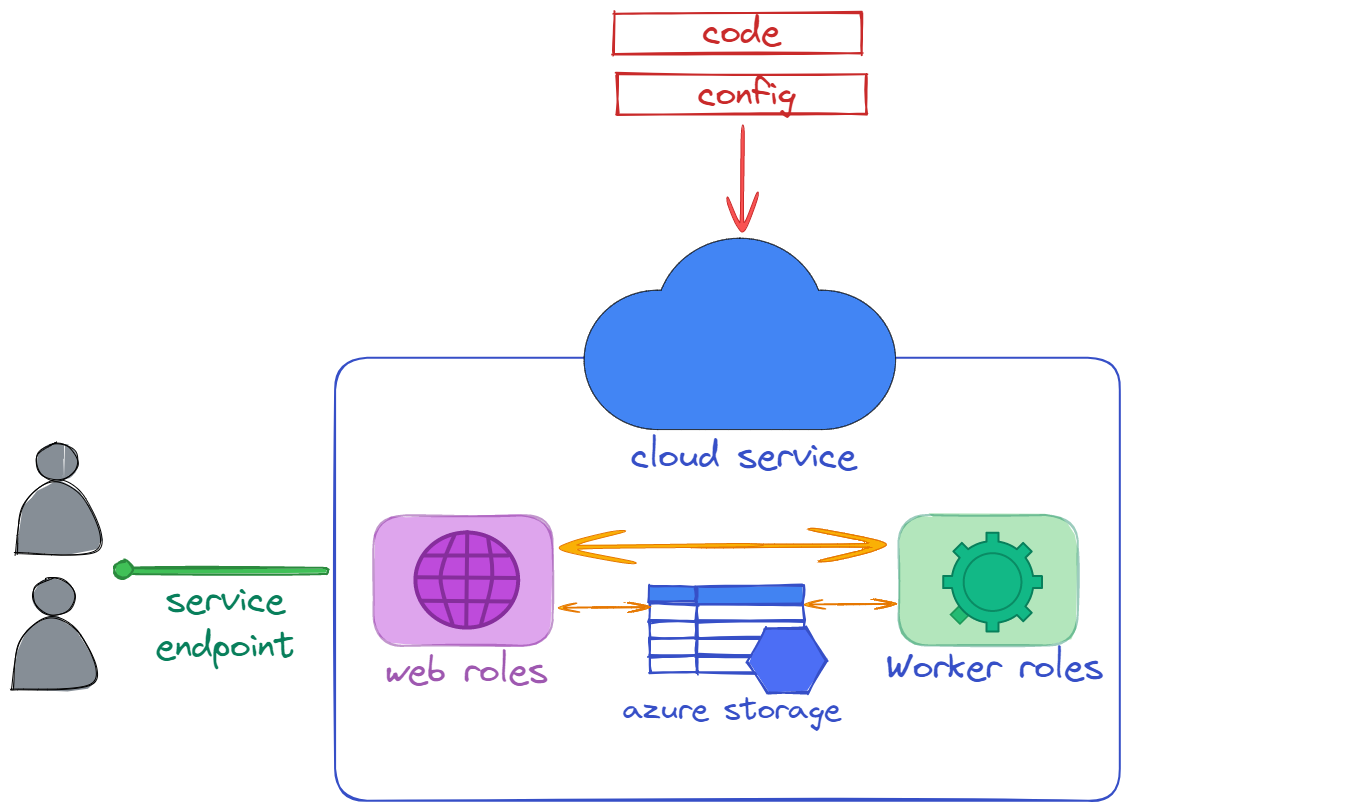

Azure Interview Questions
Introduction Azure is a cloud computing platform headed by Microsoft that offers a large spectrum of services ranging from storage to analytics and networking. But, what is cloud computing first of all? Well, to put it simply, _cloud computing is the use of technological resources to store, retrieve, and pr...

